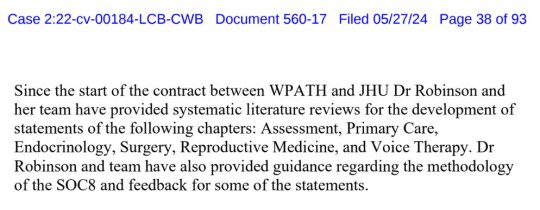#cult review
Explore tagged Tumblr posts
Text

#32#have a nice day#aesthetic#indie#neon#DVD#dvd collection#dvd review#aotv dvd#physical media#dvd cover#action movie#cult film#bluray#00S
15K notes
·
View notes
Text



ive been in the cotl trenches all year and have posted like no art for it oops
#those two cult members are named tretre and yaron and theyve destroyed my life btw#i got so emotional abt them#anyways hi i didnt realize there was an audience for cotl on tumblr till i saw the lamb adn narinder in tumblrs year in review#cotl#cult of the lamb#the lamb#lambert#narinder#the lamb x narinder#simmons likes to draw
2K notes
·
View notes
Text

#movie#movies#love#aesthetic#love quote tumblr#movie review#love quotes#motivating quotes#quotes#self love#cult classic#classic hollywood#hollywoodlove#old hollywood#intimacy#intimate
443 notes
·
View notes
Text
In celebration of valentine's day, I will show you one of the funniest negative reviews for Cult of the Lamb

#cult of the lamb#valentine's day#steam reviews#cotl heket#I can only assume this is about her /hj#cotl lamb#cotl goat#I just saw those mentioned as well
115 notes
·
View notes
Text



I got my COTL Sticker sheets from @pugakern !!!
The packaging is so cute, PLUS LIL DICE STICKERS LETS GOOOOOO. Wanna cut out the little doots on the envalope to glue em on my board. Gonna use one sheet for my switch and monitor set up and one to keep in my sticker collection book :D
Here's their post, and here's their shop for it! They look like they have a lot of other cute stuff as well >.>
#i get really excited for these#i moved my deskmat and got my cotl props out to make the review pic look all aesthetic ldkhlskdghlsdhgsdl#cult of the lamb
430 notes
·
View notes
Text
By: Jesse Singal
Published: Jun 27, 2024
In April Hilary Cass, a British paediatrician, published her review of gender-identity services for children and young people, commissioned by NHS England. It cast doubt on the evidence base for youth gender medicine. This prompted the World Professional Association for Transgender Health (WPATH), the leading professional organisation for the doctors and practitioners who provide services to trans people, to release a blistering rejoinder. WPATH said that its own guidelines were sturdier, in part because they were “based on far more systematic reviews”.
Systematic reviews should evaluate the evidence for a given medical question in a careful, rigorous manner. Such efforts are particularly important at the moment, given the feverish state of the American debate on youth gender medicine, which is soon to culminate in a Supreme Court case challenging a ban in Tennessee. The case turns, in part, on questions of evidence and expert authority.
Court documents recently released as part of the discovery process in a case involving youth gender medicine in Alabama reveal that WPATH's claim was built on shaky foundations. The documents show that the organisation’s leaders interfered with the production of systematic reviews that it had commissioned from the Johns Hopkins University Evidence-Based Practice Centre (EPC) in 2018.
From early on in the contract negotiations, WPATH expressed a desire to control the results of the Hopkins team’s work. In December 2017, for example, Donna Kelly, an executive director at PATH, told Karen Robinson, the EPC's director, that the WPATH board felt the EPC researchers “cannot publish their findings independently”. A couple of weeks later, Ms Kelly emphasised that, “the [WPATH] board wants it to be clear that the data cannot be used without WPATH approval”.
Ms Robinson saw this as an attempt to exert undue influence over what was supposed to be an independent process. John Ioannidis of Stanford University, who co-authored guidelines for systematic reviews, says that if sponsors interfere or are allowed to veto results, this can lead to either biased summaries or suppression of unfavourable evidence. Ms Robinson sought to avoid such an outcome. “In general, my understanding is that the university will not sign off on a contract that allows a sponsor to stop an academic publication,” she wrote to Ms Kelly.
Months later, with the issue still apparently unresolved, Ms Robinson adopted a sterner tone. She noted in an email in March 2018 that, “Hopkins as an academic institution, and I as a faculty member therein, will not sign something that limits academic freedom in this manner,” nor “language that goes against current standards in systematic reviews and in guideline development”.
Not to reason XY
Eventually WPATH relented, and in May 2018 Ms Robinson signed a contract granting WPATH power to review and offer feedback on her team’s work, but not to meddle in any substantive way. After WPATH leaders saw two manuscripts submitted for review in July 2020, however, the parties’ disagreements flared up again. In August the WPATH executive committee wrote to Ms Robinson that WPATH had “many concerns” about these papers, and that it was implementing a new policy in which WPATH would have authority to influence the EPC team’s output—including the power to nip papers in the bud on the basis of their conclusions.
Ms Robinson protested that the new policy did not reflect the contract she had signed and violated basic principles of unfettered scientific inquiry she had emphasised repeatedly in her dealings with WPATH. The Hopkins team published only one paper after WPATH implemented its new policy: a 2021 meta-analysis on the effects of hormone therapy on transgender people. Among the recently released court documents is a WPATH checklist confirming that an individual from WPATH was involved “in the design, drafting of the article and final approval of [that] article”. (The article itself explicitly claims the opposite.) Now, more than six years after signing the agreement, the EPC team does not appear to have published anything else, despite having provided WPATH with the material for six systematic reviews, according to the documents.
No one at WPATH or Johns Hopkins has responded to multiple inquiries, so there are still gaps in this timeline. But an email in October 2020 from WPATH figures, including its incoming president at the time, Walter Bouman, to the working group on guidelines, made clear what sort of science WPATH did (and did not) want published. Research must be “thoroughly scrutinised and reviewed to ensure that publication does not negatively affect the provision of transgender health care in the broadest sense,” it stated. Mr Bouman and one other coauthor of that email have been named to a World Health Organisation advisory board tasked with developing best practices for transgender medicine.
Another document recently unsealed shows that Rachel Levine, a transwoman who is assistant secretary for health, succeeded in pressing WPATH to remove minimum ages for the treatment of children from its 2022 standards of care. Dr Levine’s office has not commented. Questions remain unanswered, but none of this helps WPATH’s claim to be an organisation that bases its recommendations on science.
[ Via: https://archive.today/wJCI7 ]
--













==
So, there are 6 completed reviews sitting somewhere, that WPATH knows shows undesirable (to them) results. And they know it. And despite - or perhaps, because of - that, they wrote the insane SOC8 anyway. And then, at the behest of Rachel Levine, went back and took out the age limits, making it even more insane.
This isn't how science works, it's how a cult works.
When John Templeton Foundation commissioned a study on the efficacy of intercessory prayer, a study which unsurprisingly found that it's completely ineffective, it was forced to publish the negative results.
So, even the religious are more ethical than gender ideologues when it comes to science. This is outright scientific corruption.
#Jesse Singal#Johns Hopkins#Johns Hopkins University#WPATH#World Professional Association for Transgender Health#anti science#gender cult#corruption#medical malpractice#medical corruption#medical scandal#systematic review#Cass review#Cass report#gender affirming care#gender affirming healthcare#gender affirmation#ideological corruption#religion is a mental illness
275 notes
·
View notes
Note
How much would someone have to bribe Ando to wear the maid outfit?
Considering I managed to get him into the bunny suit for free, maybe you'll just have to wait for my time to come (òuó)

And that time may come very soon, hehe ~
#cult of the lamb#the little bubble au#oc#ando#the little bubble ask#reviewing questions#maid outfit#hehe#¡thanks for asking!#On The Prowl
60 notes
·
View notes
Text

Lil story below the cut
Twisted bonds
It was more symbolic than anything.
A sign of unity for the flock. The connection that ran so deep, even death could not part their ways. The people saw it as a sign, a blessing that needed to be acted upon. They demanded the union, to show them their faith was not misplaced. No matter the punishments, the demands, sacrifices, the flock would not relent. It was… inevitable. And it was best to rip the bandage free before it began to fester and infect what little faith that remained.
It was funny in a way. How ironic it seems to see the bands forged for their union made of the same shackles that held them prisoner. The chains that bound them as vessel and deity now woven and twisted into a noose made for two. An omen of the past, present, and future.
There wasn’t a spark of anything that could be considered love. Not a moment of peace or trust between them since the beginning. If anything, they were a single match throw from burning each other to the ground, taking everything and everyone else along with them. No, there was no room for love with what they were, what they had been through. But despite it, there was a bond. Silent, unbreakable, eternal, Begrudging.
There was a mutual understanding. A shared knowledge that if one sunk, the other would be dragged down with them. No matter how they tried to stay ashore, the boat would rock and both would drown for falling overboard. It was tested again and again. If one were to perish, the other would follow. A knife to the heart, a rip of the gut, a drop of poison… a bullet to the brain. Though they would never admit it, they knew. This was hell, and this connection was their punishment.
It was fall, a fitting time for a wedding regarding death. Surrounded by the vibrancy of red and orange trees, and the unmistakable sent of leaf decay. The cold nip of winter bit at her skin, dragging across like knives as each step closer to the archway. Her dress itself was something out if a dream. A deathly black at the top trailing down into a rich bloody red at its train. Rubies and onyx littered the bodice, each one a grim reminder of the lives lost to make such an extravagant gown. Her crown wrapped around her head as though acting like a tiara, and giving her a veil to hide behind while her life is bartered away to this… filth.
She hated every moment.
Being dressed and dolled, the gitz and glam. It was inconceivably impractical. The heavy fabric, the lowered guards, the general atmosphere of the flock celebrating what she equated to her second imprisonment. To trudge through all that only to be met with his conniving, scheming face. It had to be some kind of torture. But it was for the cult. And if this would shut them up, then so be it.
------------- This took me entirely too long but go pixel pen powers i guess. i just wanted to draw Ewelia in a dress ngl. So yea, enjoy.
#cotl art#cotl lamb#cotl merciless#cult of the lamb#merciless au#cotl narinder#cotl au#no reviewing we die like kings#stupid little story#enjoy lamb hating everything
61 notes
·
View notes
Text

Three On a Meathook (1972)
#70s horror#cult classic#cult movies#cinema#horror film#cinematography#cinephile#cult cinema#cult movie#cult film#films#movies#film#horror#film frames#film stills#screencaps#horror films#horror movie review#movie review#horror movie recommendations#movie recommendation
167 notes
·
View notes
Text








a film a day.
‘the neon demon’ (2016), dir. nicolas winding refn
letterboxd rating: ✭ ✭ ✭ ✭
#a film a day#the neon demon#films#movies#cinema#elle fanning#nicolas winding refn#neo noir#film frames#film#cinematography#screencaps#movie review#letterboxd#cult cinema#movie#film stills#cinephile
527 notes
·
View notes
Text
Two Vivica A. Fox movies back-to-back? Sounds like an interesting time to me! Next up in our exploration of feminine rage, we're exploring the complicated dynamic of traditional families in both 1997's Soul Food and 2007's This Christmas. Looks like the holidays came early this year! Check it out!
#2000s Black movies#90s Black movies#Black comedy#Black dramas#Black family movies#black female lead#christmas movie#christmas movies#classic Black movies#comedy#cult classics#drama#family drama#film#holiday films#holiday movies#Irma P. Hall#Loretta Devine#Mekhi Phifer#Michael Beach#movie-review#movies#Nia Long#nostalgia#Regina King#reviews#Sharon Leal#sibling rivalry#social commentary#Thanksgiving movie
20 notes
·
View notes
Text
Chug Of War is a fun episode, but it kinda makes no sense...
So something I've decided to try is analyzing some Chuggington episodes, to get a few discussions going and hear other people's thoughts on the show. Not every episode, particularly really good ones, really wacky ones, ones with kinda dodgy writing or ones that are legitimately not so good. The latter two are tending more toward Tales From The Rails territory.
I've decided to start with S2's Chug Of War, or Wilson And The Steam Team for the American audience.

(Spoiler warning)
So what happens is that Vee orders for a team of chuggers to gather the rolling stock from the mine for cleaning, but because it's a dirty job, no one volunteers to go except Speedy.

Speedy then suggests a Chug-Of-War (tug-of-war) to settle this, to which Vee agrees. Wilson is excited - until he ends up on Speedy's team instead of Harrison's. He tries to swap teams with Hodge, but Hodge refuses and Wilson gets caught by Harrison and taken back to Speedy's team.

Annoyed, Wilson tries to sneak off again, possibly bailing himself out of the Chug-Of-War altogether, but Emery bumps into him, and then laughs when he sees Speedy's Steam Team practicing breathing, much to poor Wilson's humiliation.
Vee then asks for a chugger to fetch a peace of rolling stock for the Chug-Of-War and this time Wilson immediately volunteers - anything was better than breathing with the steamies.

But then Wilson gets trapped in the underground store due to poorly shunting a hopper car out of his way, and it's time for the teams to head to Border Bridge for the Chug-Of-War.

Dunbar assumes Wilson has forgetten what he was doing so no one thinks to go check on him and they proceed on with the Chug-Of-War. (Assholes.)
Luckily Emery is passing through on his passenger route and helps Wilson get free using Speedy's breathing method, allowing Wilson to help Speedy's team win the Chug-Of-War.
Later however Wilson shows up to help Harrison and his time with their job, which Harrison happily accepts, so there are no hard feelings.
Let's review
A train tug-of-war was a really cool idea for a Chuggington episode, however the way this was set up in the story is kind of a mess.

Firstly, I really don't think you need a whole team of chuggers to clean out the mine. All they're doing is just hauling out empty wagons? You could just assemble a whole consist and haul it out in like a couple hours or so tops. I doubt there are THAT many cars just left inside a mine anyway. A two or three-engine job maybe, but seven definitely feels like overkill.
Secondly, let's talk about Wilson's line here:

This would imply that Wilson has never interacted with any chugger on this team throughout the 52 episodes of S1, the only exception would be Speedy as he is fully introduced this season, but he's still friends with everyone here. If he said Koko and Brewster instead that would have been fine.

Now it may sound like I'm overthinking this line, until you remember it's not much of a steam team when there are only three steam engines and the majority are not. You got three diesels and a cable car girlie my dude. This would have made more sense if they had introduced more steamies around this point in the show, doesn't have to be specifically this episode. Would've been so much cooler if they did that. It would open oppurtunities to learn more about Chuggington's days of steam.
Lastly, am I the only one who finds it a bit strange that no one, absolutely no one other than Speedy volunteers to go to the mine?
I mean, we had a whole episode in S1 where the three trainees get covered in mud and Wilson doesn't want to go into the Chug Wash, he doesn't mind getting dirty at all. I imagine the reason he didn't volunteer is because it's most likely implied that gathering the rolling stock from the mine would've taken a very long time and a playful and excitement-seeking character like him didn't want to be lumbered with that.
I'm pretty sure Brewster, Dunbar and Calley would be the most likely to volunteer, they've all got pretty good work ethics but yet here we are and I can't think of an in-character excuse for them. I would also say Irving would've volunteered because of his whole "neat and tidy" shtick, but then, that would apply to himself so that could also be the reason why he didn't want to go.
Maybe there was very little work to do that day and the chuggers would get some time off and then Vee suddenly coughs up this bullshit. Yeah... that sucks, I can see why no one volunteered then.
I also kinda find some of the chuggers involved in this just slightly strange, Mtambo is usually busy at the Safari Park, Hodge is roped into this because he's shown at the roundhouses at the start of the episode when he usually sleeps in Eddie's workshop, and would normally have work to do with him. But out of all the chuggers here, Zephie makes the least sense to involve in this. She's a tiny ass cable car! We've seen her struggle pulling one boxcar up the mountain, which is just a steep as the mine, and then crash coming back down with that same car loaded, and you're gonna try to send her of all chuggers to clean out a mine?! She'd just be dead weight!
Conclusion
Overall this is not the worst episode throughout Chuggington's run, I'd roughly consider it a B-tier in fact, hell, probably the least frustrating episode I'll ever talk about, but it's not quite the most suitable first choice to toss off to people getting into Chuggington either.
I kinda used to not really like this episode as a kid because Harrison was kind of an asshole to Wilson not letting him onto his team, so was Hodge now that I think about it:

I mean I get it, Harrison choose Brewster because he's stronger, but Wilson has his power too. Harrison's bigger bastard move though was not dropping one of his team after Wilson went missing.
Harrison gained character development in the S1 finale, Training Time Harrison, promising not to be so selfish, and it was Wilson having an accident trying to copy him that made him change his ways, so surely he'd be gracious enough to give the young trainee who admires him a chance and play fairly?

I guess not...
Thanks for reading, feel free to sound off your thoughts!
#Chuggington#episode review#episode analysis#Chuggington Classic Series#Chuggington Season 2#Chug Of War#Wilson And The Steam Team#chuggington fandom#chugger cult
22 notes
·
View notes
Text

#movie#movies#love#aesthetic#love quote tumblr#movie review#love quotes#motivating quotes#quotes#self love#hollywood gossips#hollywood#classic movies#classic hollywood#classic#cult classic
34 notes
·
View notes
Text
So I watched Natsume Yuujinchou
or "Natsume's Book of Friends" for the English title.
I was pleasantly surprised by this one. It's a real nice slice of life anime. I'm writing this as of watching season 1 and I'm absolutely going to continue watching this one.
Anyway what's it about? Youkai! Easy way to hook me in immediately. If you involve youkai (or similar folklore creatures) in a story I'm immediately interested. Even so, despite my strong bias on the subject matter, I promise it's done very well.
The titular character, Natsume, is a highschooler born with the ability to see and interact with youkai. Growing up while being able to see supernatural phenomena while everyone else can't was rough for him. (If you don't know what youkai are, think of Natsume's situation like being able to see ghosts.) His parent's weren't even sure how to deal with him and sent him off to their relatives instead of raising the child themselves.
Natsume's character is defined by his isolation, but also by the few people he has met that has shown him real kindness. His current family earnestly cares about him, but he hides the fact that he can see youkai from them, as he does with everyone. He has learned that doing so will lead to isolation, but ironically hiding what he can see isolates him from other people as well.
However, Natsume's ability isn't unique to himself. His grandmother could also see youkai, and she's infamous for creating the "Book of Friends." This book contains the names of tons of youkai, and with that book, you can essentially control any youkai whose name is written in it. For a long time Natsume would have to deal with some youkai targeting him, and this was why. Having now learned that he has his grandmother's book, Natsume resolves to return the names of youkai.
Why?
Well watch the show. I could sit here and summarize it, but that doesn't make for a good review. The story....or at least season one of the story....focuses on that theme: isolation. It's not just Natsume, but many of the youkai he encounters that deal with it in their own ways. As a result, each episode ends on a pretty bittersweet note.
Isolation comes in many forms; loss, rejection, protection, selfishness, resentment, and much more. People, and in this case, youkai experience it in many ways, but instead of wallowing in its own despair, this anime focuses heavily dealing with it positively.
I appreciate this anime's willingness to show very sad situations and the characters involved are pretty mature about it. I can imagine this anime helping actual people deal with their own struggles with isolation.
Now, that's not this anime's only theme. It would be fairly shallow if that's all it had to say. You got some action, comedy, and drama here or there. There's some nice character development going on as well. I really like how the show is written overall.
I wouldn't say its at a "masterpiece" quality since there are definitely some jumps in logic that happens sometimes. It definitely makes some poor excuses to set up certain scenes, but I can't complain too much. These issues only show up for a few episodes.
Speaking of the episodes, they're all self-contained. There's a linear narrative of course, but every episodes concludes itself and does not inform what happens in the next episode. This made it strangely hard to binge for me since there isn't a hook to keep you watching. I loved the show, but each episodes ends on such a satisfying note I want to do something else and come back to it later. Weird.
Anyway, Brain's Base was animating this one! Y'know these guys really take on a wide variety of stuff huh? Natsume is an interesting one since it's both very laid back and has some action. I wouldn't say Brain's Base went particularly crazy here, but you can see the effort put into a lot of shots. The animation looks good, but it's humble. Nothin real fancy going on, but the visual direction does a great job at conveying this story.
I have a feeling this is one of the shows Brain's Base is proud of, and it's successful too! This anime goes on for several more seasons and I'm pretty excited to keep going with it.
What's real crazy is that I've never heard anyone talk about this anime before. This is good! Real good! I highly recommend this to anybody, even if you have never seen anime before. It's rare that I get to say that because there's usually some caveat to an anime that makes it hard to recommend to anybody, but there's nothing to worry about here! It's good, great even.
Maybe it just couldn't reach a large western audience. It is dealing with youkai after all. That's a shame, but hey, it doesn't mean you can't watch it now! Give it a try!
#natsume yuujinchou#natsume's book of friends#anime#review#i know there's fans I just havent run into them I guess#it's in that cult classic zone#im probably gonna be real slow with getting to season 2 but I'll definitely get to it!#also as a touhou fan I want to see Natsume interact wuth touhou characters so bad#how have I not run into doujin with that premise?#i have a lot of positive words here. Im really hoping season 2 doesnt fumble whats established here#gosh i wanted to ramble more about the characters but I focused on Natsume
26 notes
·
View notes
Text
I just watched The Rocky Horror Picture Show for the first time and I genuinely think my brain in leaking out my ears
#/pos#it was a very interesting experience#also insanely explicitly queer for 1975??#no wonder it got terrible reviews when it came out lmao#anyway Tim Curry served#sorry for yapping in tags#professional yapper#the rocky horror picture show#rocky horror picture show#rocky horror show#rocky horror#70s#cult classic#queer media#queer#lgbt#movies#films#first watch#gay
23 notes
·
View notes
Text

throws this at you at mach 20
so uhh this is low effort. bcs I don't have a lot of art from the beginning of the year and also im lazy a lil. also the hazbin fanart is the ONLY piece of art from january that i could find??? and im not happy about it because i had some growth this year and i really don't enjoy hazbin anymore. anyways
to 2025 we go!!! it's been an exciting year and somehow it always comes back to cotl
#art review 2024#yippee!!#doodle#cult of the lamb#cotl#disco elysium#ultrakill#im not tagging hazbin bro im leaving this behind#peace and love on planet earth
20 notes
·
View notes